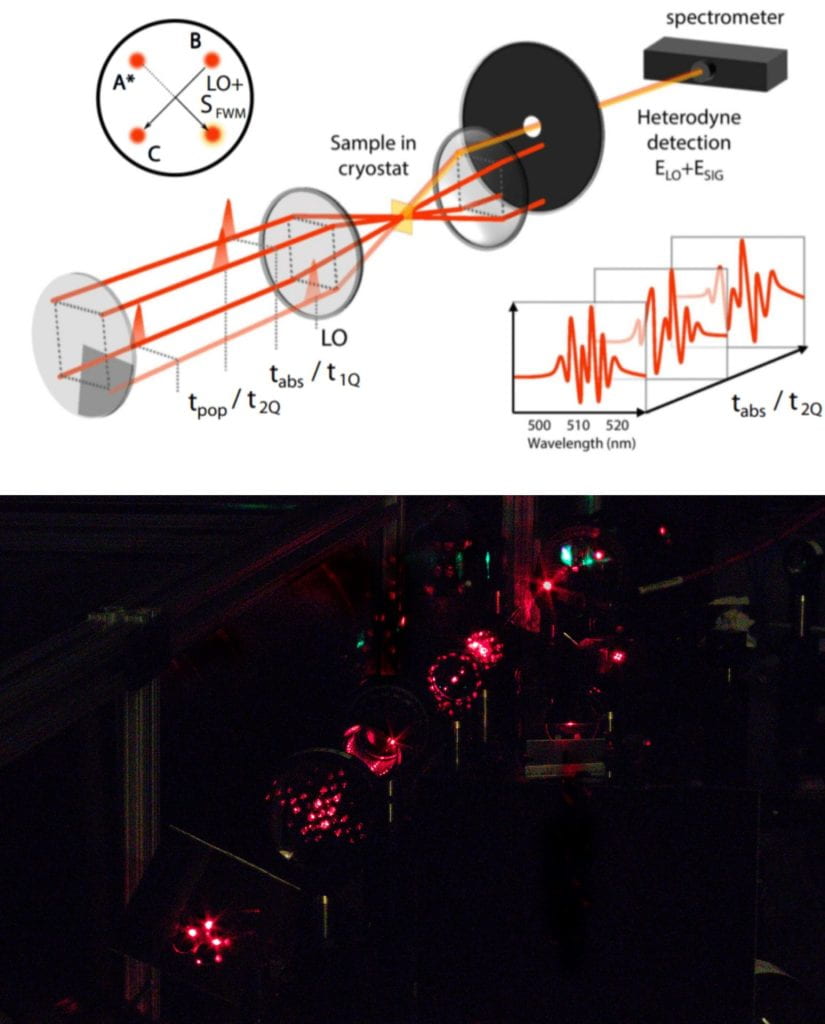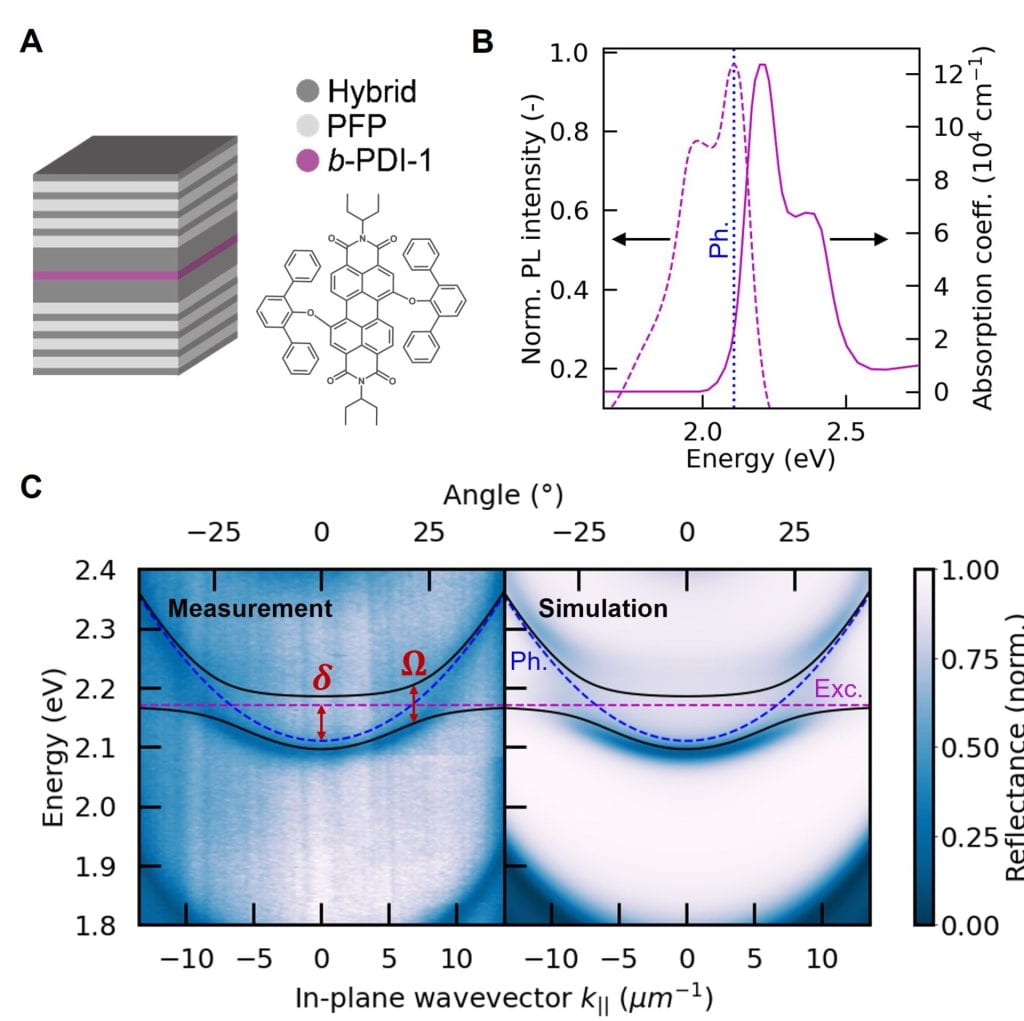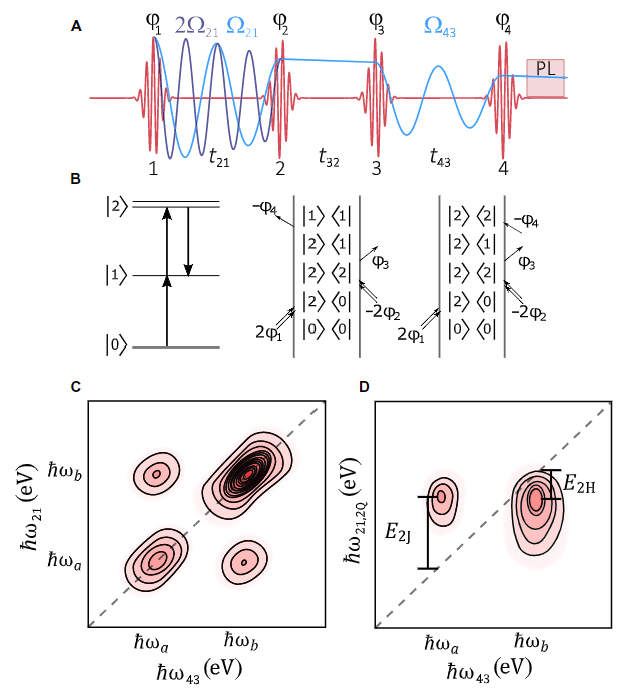The research in our laboratory is directed towards elucidating the fundamental chemical and physical principles that govern excited-state dynamics in materials, with an interest in discovering the principles that underpin their function as active layers in optoelectronic devices. Our tools are various optical probes, primarily nonlinear ultrafast spectroscopies in which we generate ultrashort optical pulses (as short as 10 femtoseconds), and use them to both induce and probe a nonlinear optical response in matter, and time-resolve the evolution of that response. We collaborate closely with groups that design and synthesize materials, as well as ones that characterize and control their structure over many lengthscales, and finally with groups that implement them in devices. Our approach is thus highly collaborative and interdisciplinary.
Recent Research Areas
Hybrid Organic-Inorganic Metal-Halides
Ruddlesden-Popper Perovskites. 2D coherent spectroscopy (COLBERT) and Resonant Impulsive Raman spectroscopy (RIRS) reveal the effect that many-body interactions have on exciton formation and dynamics. The exciton dephasing and energy landscape of multi-excitons depend strongly on lattice vibrations, Coulomb correlations, dielectric confinement, lattice disorder, electron-phonon coupling, etc.
Phonon Modes. The anharmonicity of the Ruddlesden Popper metal-halide lattice, and its consequences for their electronic and optical properties, are paramount in their basic semiconductor physics. It is thus critical to identify specific anharmonic optical phonons that govern their photophysics. We study the nature of phonon–phonon scattering probabilities of the resonantly excited optical phonons that dress the electronic transitions in these materials.

Quantum Materials
We study correlations and dynamics of excitations in quantum materials to understand their energetic landscapes. Using two-dimensional coherent spectroscopies, quantum tomography, and Fourier transform microscopy we probe the fundamental physics of materials that display strong light-matter coupling or quantum phenomena such as polariton formation, and Bose-Einstein condensation, among others.
Exciton-Polaritons. We aim to get a further understanding of the physical processes involved in strong light-matter mixing leading to exciton-polaritons states and many-body scattering events in polariton systems. For example, we are interested in the role of molecular vibrations, or phonons in the case of periodic semiconductors, and rigidity.

Conjugated Polymers
We study correlations between the microstructures of conjugated polymers and their photophysical responses and excitations. As most of the photophysical processes in conjugated polymers occur on a time scale of tens of femtoseconds to picoseconds, we employ transient absorption, 2D photoinduced absorption (2D-PIA), and 2D photoluminescence (2D-PL) spectroscopy to study their dynamics. Using nonlinear coherent spectroscopy we are able to find signatures of excitation-excitation interactions that are otherwise lost in the spectral overlap. In the polymer PBTTT, we find direct evidence of bound biexcitons, a key intermediate in many photophysical processes

